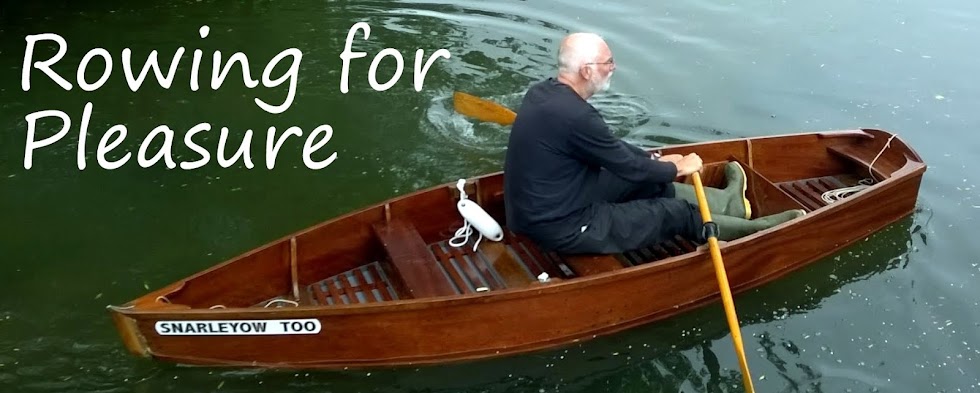 A lovely double skiff has come up on eBay. She is 18ft long and fitted with outriggers and square pattern swivels so she must have been built for racing, though the high freeboard and fixed thwarts seem to indicate tidal use. She is currently in Alfreton, Derbyshire, so perhaps she was used on one of the northern rivers.
A lovely double skiff has come up on eBay. She is 18ft long and fitted with outriggers and square pattern swivels so she must have been built for racing, though the high freeboard and fixed thwarts seem to indicate tidal use. She is currently in Alfreton, Derbyshire, so perhaps she was used on one of the northern rivers.The seller says she was bought for a re-enactment group but the chap who was going to restore her unfortunately died, so it is for sale at the bargain price of 99p. The seller also says it 'needs some TLC' which is Northern understatement - judging by the patch on the bottom and some evident damage, she needs total restoration. But I think it would be worth it.



























